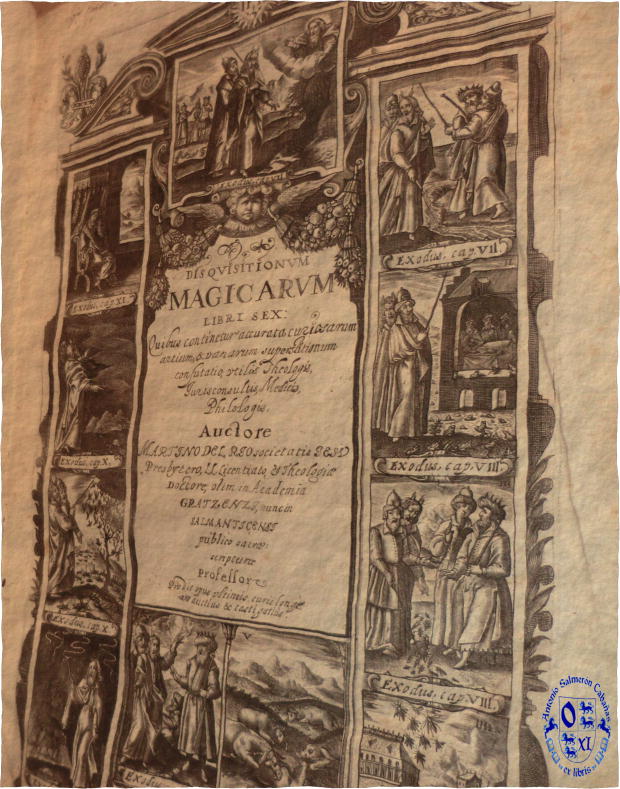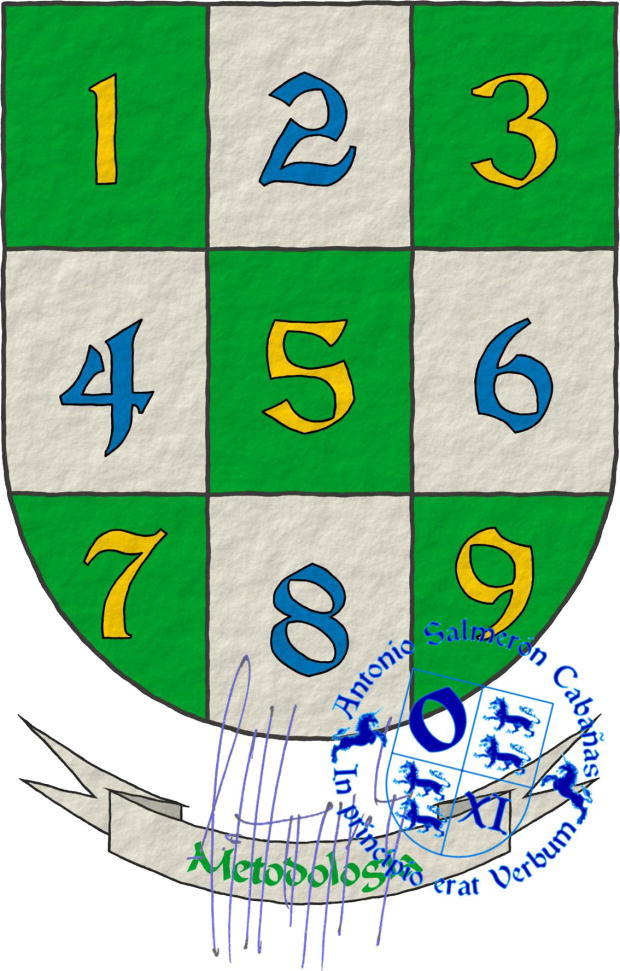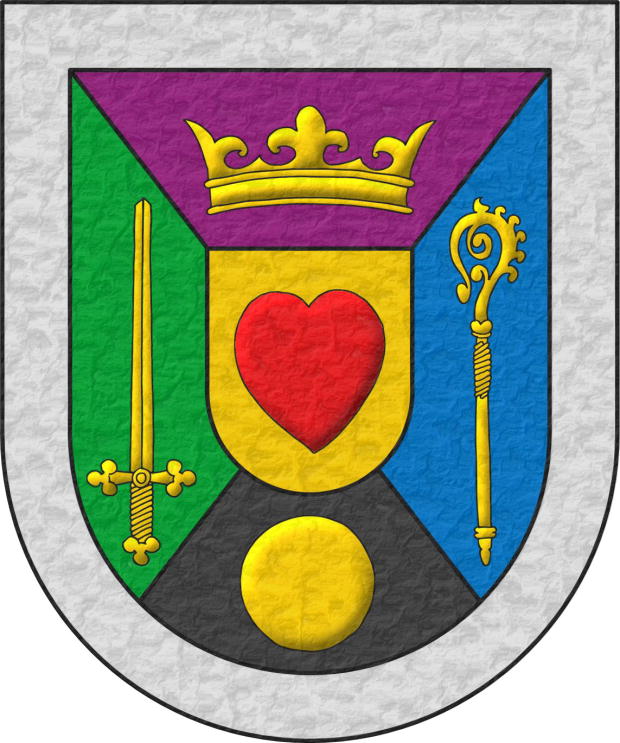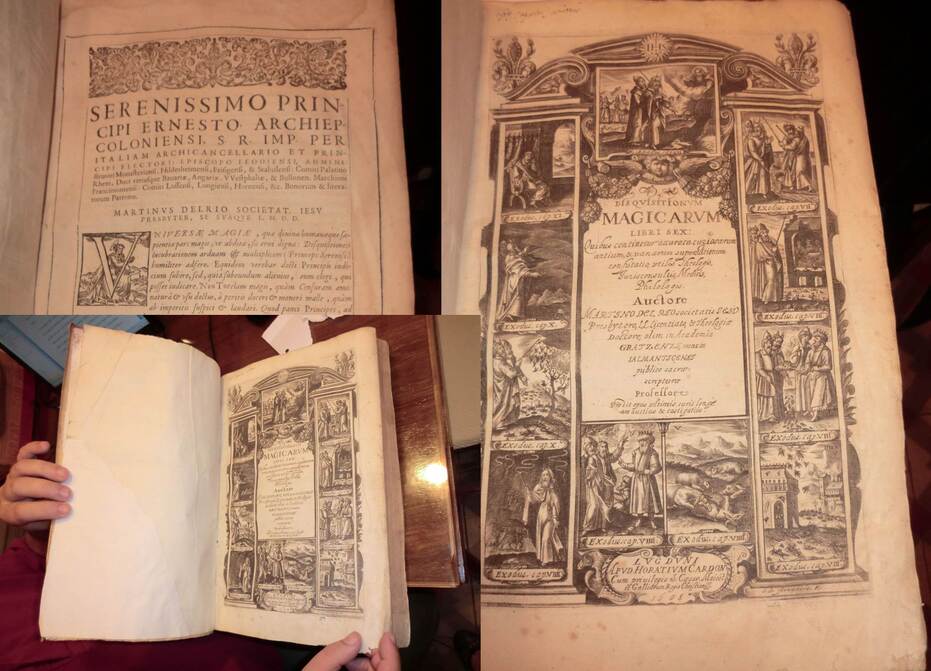
o-XI, video of the heraldic starmap
The starship of this video is based on the «Narcissus», the lifeboat of the «Nostromo», designed by Ron Cobb for the film «Alien». The music is «Also sprach Zarathustra», Opus 30, from Richard Strauss, interpreted by Kevin MacLeod.
Credits:
- Kevin MacLeod is the author of the music.
- Ron Cobb is the designer of the original starship.
Blazon keywords: Quarterly, Sable, Or, One, Letter, Two, Wolf, Passant, In pale, Number, Unicorn, Mullet and Compass rose.
Style keywords: Semi-circular and Freehand.
Classification: Video, Map, Created and Personal.
Bearer: Salmerón Cabañas, Antonio.


o-XI, video of the construction of the coat of arms
The aim of this 2 and a half minute video is to show some of the concepts that have been used during the process of creating this coat of arms and, also, to show the final graphic result.
The texts in the video are in Castilian, but the video can be easily understood without the need for these supporting texts.
Credits: Kevin MacLeod is the author of the music and Dr. Marianne Steinbauer has the copyright of the font.
Classification: Created, Personal and Video.
Bearer: Salmerón Cabañas, Antonio.


University degrees
I hold a PhD cum laude, a Masters degree, a Specialization and an Academic Grade from four different universities:
- Doctor and Graduate by the Technical University of Madrid (UPM),
- Master by the IESE at the University of Navarra (UNAV),
- University Specialist by the Department of Private Law of the University of Burgos (UBU), and
- University Graduated by the Catholic University San Antonio.


![Ver [Rio, M. del; 1608] en referencias bibliográficas. Libro abierto, hojas de plata, filo de oro, guardas de gules, tapas de sable.](../css/Libro.Bibliografia.png)
Rio, M. del; 1608

Martino Antoine del Rio, Societis Jesu, «Disquisitionum Magicarum Libri Sex: Quibus continetur accurata curiosarum artium et vanarum superstitionum confutatio, utilis Theologis, Jurisconsultis, Medicis, Philologis», Lugduni: apud Horatium Cardon, 1608.
There are other editions of this book, for example, the edition by Henning with 1,070 pages, from the year 1617.
The collage of images that accompanies this article corresponds to the inner cover of the 1608 edition of this book, that has been photographed by me, you can see my ex libris on the bottom of the of photography.
Bibliographical reference of century XVII.
Author: Rio, Martino del.
External link:


Heraldic creation methodology

While writing and illustrating «The book of the coat of arms of the Wolves Sable and the Unicorns Argent», I established the foundation for a work process that has now become my signature methodology in heraldic creation. Recognizing the importance of a methodological approach to consistently produce quality artwork, I continue to refine it with the experience I accumulate.
My methodology can be summarized as a 3-phase process, each containing 3 distinct activities, with the flexibility to revisit any phase for continual improvement.
The diligent execution of these nine activities ensures that the final product meets the expectations of the future bearer of the heraldic coat of arms.
The three phases are as follows:
- Conception, which encompasses: elicitation and ideation, heraldic research and critique, creation of a preliminary coat of arms sketch.
- Plastic execution, which includes: layout and tincture application, ornamentation and detailing, lighting effects and final artwork production.
- Completion and fulfillment, which involves: heraldic editing, final review and artwork delivery, documentation and archival closure.


![Ver [Emblemata; 1998] en referencias bibliográficas. Libro abierto, hojas de plata, filo de oro, guardas de gules, tapas de sable.](../css/Libro.Bibliografia.png)
Emblemata; 1998
Baron of Valdeolivos Emblematic Chair, of the Fernando el Catolico Institution, of the Centre of Scientific Research (C. S. I. C.) and of the Government of Zaragoza, «Emblemata», Volume 4th, Emblemata Aragonese Magazine about Emblems (E. R. A. E.), 450 pages, 135 pictures, ISSN 1137-1056, Legal deposit Z.3.937 1996, printed by the Cooperativa de Artes Gráficas Librería General, Zaragoza, 1998.
Bibliographical reference of century XX.
Classification: Magazine and Castilian language.
Author: Cátedra de Emblemática Barón de Valdeolivos.
External resource:


![Ver [Heraldic classification] en criterios utilizados. Unicornio saltante sobre la divisa, criterio.](../css/Unicornio.Criterio.png)
Heraldic classification
I classify the coats of arms that I interpret or create depending on the field of the bearer of these armories and I do so within one of the following six categories:
- Personal heraldry.
- Governance heraldry.
- Military heraldry.
- Religious heraldry.
- Socioeconomic heraldry.
- Imaginary heraldry.
With their similarities and differences, there are many classifications within heraldry, some of which come from recognized authors. This specific classification, presented here, does not aim to be more than my personal way of classifying and organizing the coats of arms that I interpret or create.
As with any classification structure within a varied and rich universe of occurrences, as is the case with heraldry, there are always specific instances that belong or may belong to 2 or more classes, in these cases, I include the coat of arms in the one that seems most reasonable and provides the quickest and most logical location.
It could be suggested that this classification corresponds to the human being, in personal heraldry, and to their four most characteristic ways of organizing from a heraldic perspective: a) political and governance structures, b) military, c) spiritual and religious, and d) those of an economic or social nature. Allowing, in a sixth and final section of imaginary heraldry, for those creations of impossible ownership, on the border of heraldry and which, despite this, we do not want to exclude. The appeal of imaginary heraldry is that it is like a blank canvas on which we can create a coat of arms for someone or something with more freedom than in the other classes.

Imaginary coat of arms that encompasses the 6 classes of heraldry.
The quartered in saltire shield that illustrates this article symbolizes these 6 classes of heraldry:
- In the escutcheon of Or, a heart Gules symbolizes personal heraldry, the nobility of people, the love of family, and the blood of lineage.
- The 1st of Purpure and the crown Or represent political and governance structures and their heraldry, with Purpure being a color associated with power since Roman times.
- The 2nd of Vert and the sword point upwards Or, in open field, a vert battlefield, symbolizes military heraldry.
- The 3rd of Azure, the color of the sky, and the crozier Or is the representation of religious heraldry.
- The 4th of Sable, reminiscent of an industrial or mining ground, and a bezant, always Or, representing currency and money, symbolizes socioeconomic heraldry.
- The bordure Argent, as an outer border, frontier, or blank canvas, is the proper domain of imaginary heraldry.
Reflections on governance heraldry
In my approach to heraldry, I choose to unify political and civic heraldry under the broader concept of «governance heraldry». While modern terminology often distinguishes «civic heraldry» as a separate entity, with professionals focusing specifically on municipal arms, I see a deeper connection. Historically, the heraldry of kingdoms and kings was frequently intertwined; the arms of regions or realms were quartered to create the arms of united kingdoms. These kingdoms were often divided into regions and provinces, with cities frequently founded by royal orders and granted certain privileges.
Thus, I bring all of these elements together under the concept of «governance heraldry», in Castilian «heráldica política». Although in English this is often translated as «civic heraldry» to align with contemporary usage, a more precise term might be «political and civic heraldry». However, this combination does not fully convey the interconnectedness of all forms of heraldic expression related to governance, whether at the level of a kingdom, region, or municipality.
Category: Criterion.


![Ver [Personal Heraldry] en criterios utilizados. Unicornio saltante sobre la divisa, criterio.](../css/Unicornio.Criterio.png)
Personal Heraldry
Within personal heraldry, I classify the arms of individuals, their families, or lineages.
When a coat of arms representing a person, such as in the case of a king, is also used to represent something else, such as their kingdom, I classify it as personal heraldry, prioritizing the representation of the individual over other possible uses, as this is the origin of heraldry.
The historical arms of Carlos de la Cerda or the current ones of Austin Charles Berry and of Stephan Urs Breu are examples of personal heraldry.
In Spanish, I use the name given by [Cadenas y Vicent, V. de; 1975; page 53] and in English «personal heraldry», which is the most commonly accepted term.
Categories: Criterion and Personal.

Continue with: Governance heraldry.
-
Language
-
Categories of heraldry
-
Divisions of the field
- Without divisions
- Party per pale
- Party per fess
- Party per bend
- Party per bend sinister
- Tierce
- Tierce sinister
- Tierced per pale
- Tierced per fess
- Tierced per bend
- Tierced pallwise inverted
- Quarterly
- Quarterly per saltire
- Gyronny
- Party per fess, the chief per pale
- Party per pale, the sinister per fess
- Party per fess, the base per pale
- Party per pale, the dexter per fess
- Chapé
- Chaussé
- Embrassé
- Contre-embrassé
- Party per chevron
- Enté
- Enté en point
- Flanched
-
Metals
-
Colours
-
Furs
-
Other tinctures
-
Ordinaries and sub-ordinaries
-
Diminutives of the ordinaries
-
Geometric charges
-
Composite ordinaries
-
Inanimate charges from Nature
Atom, Crescent, Diamond, Emerald, Estoile, Increscent, Lightning flash, Moon, Mount, Mullet, Mullet of four points, Orbital, Plough of Ursa Major, Rainbow, Ray of the sun, River, Sea, Snowflake, Sun, Sun in splendour, Sun of May, Trimount, Water and Wave.
-
Vegetal charges from Nature
Acorn, Apple, Apple tree, Ash, Bluebonnet, Camellia, Chrysanthemum, Cinquefoil, Cornflower, Dogwood flower, Double rose, Elm, Fleur de lis, Flower, Gourd, Holm oak, Hop cone, Kapok tree, Laurel, Lily, Linden, Lotus flower, Madonna lily, Mexican cedar tree, Oak, Olive tree, Palm tree, Plantain plant, Pomegranate, Poplar leaf, Rose, Shamrock, Sunflower, Thistle, Tree, Tulip, Vine and Wheat.
-
Animal charges from Nature
Badger, Bald eagle, Barbel, Barn owl, Bear, Beaver, Beetle, Bighorn sheep, Blackbird, Boar, Brach hound, Bull, Doe, Dog, Dolphin, Dove, Eagle, Elephant, Falcon, Female figure, Fish, Flame, Fly, Fox, Frog, Goat, Goldfinch, Goose, Heron, Horse, Hummingbird, Jaguar, Lark, Leopard, Lion, Lion passant, Lion rampant guardant, Lioness, Lynx, Male figure, Martlet, Merino ram, Owl, Panther, Parrot, Peacock, Pelican, Pelican in her piety, Puffin, Quetzal, Raven, Roe deer, Rooster, Savage, Seagull, Serpent, She-wolf, Stag, Starling, Talbot, Tyger, Vulture, Warren hound and Wolf.
-
Parts of natural charges
Arm, Beak, Branch, Caboshed, Chest, Claw, Covert, Dorsal fin, Eagle claw, Ermine spot, Escallop, Feather, Foot (palmiped), Foreleg, Forepaw, Hand, Head, Heart, Hoof, Leaf, Neck, Ostrich feather, Palm frond, Paw, Roe deers' attires, Shoulder, Sprig, Stags' attires, Stem, Swallow-tail, Tail, Tail addorsed, Tail fin, Talon, Tooth, Trunk, Trunk (elephant), Two hands clasped, Two wings in vol, Udder, Wheat spike, Wing and Wrist.
-
Artificial charges
Ace of spades, Anchor, Anvil, Arch, Arm vambraced, Armillary sphere, Arrow, Axe, Bell, Bell tower, Beret, Bonfire, Book, Bookmark, Bow, Branding iron, Bridge, Broken, Buckle, Cannon, Cannon dismounted, Cannon port, Canopy roof, Carbuncle, Castle, Celtic Trinity knot, Chain, Chess rooks, Church, Clarion, Clay pot, Closed book, Club, Column, Comb, Compass rose, Conductor's baton, Cord, Covered cup, Crozier, Crucible, Cuffed, Cup, Cyclamor, Dagger, Double vajra, Drum, Ecclesiastical cap, Fanon, Federschwert, Fleam, Four crescents joined millsailwise, Galician granary, Garb, Gauntlet, Geometric solid, Grenade, Halberd, Hammer, Harp, Host, Hourglass, Key, Key ward, Knight, Knot, Lantern, Letter, Line, Loincloth, Menorah, Millrind, Millstone, Millwheel, Monstrance, Mortar, Mullet of six points pierced, Nail, Non-classic artifact, Norman ship, Number, Oar, Oil lamp, Open book, Page, Pair of scales, Parchment, Pestle, Piano, Pilgrim's staff, Plough share, Polish winged hussar, Port, Portcullis, Potent, Quill, Ribbon, Rosette of acanthus leaves, Sabre, Sackbut, Sail, Scroll, Scythe, Sheaf of tobacco, Ship, Skirt, Spear, Spear's head, Stairway, Star of David, Step, Sword, Symbol, Tetrahedron, Torch, Tower, Trident, Trumpet, Turret, Two-handed sword, Wagon-wheel, Water-bouget, Wheel, Winnowing fan and With a turret.
-
Immaterial charges
Angel, Archangel, Basilisk, Dragon, Dragon's head, Garuda, Golden fleece, Griffin, Heart enflamed, Justice, Mermaid, Our Lady of Mercy, Ouroboros, Paschal lamb, Pegasus, Phoenix, Sacred Heart of Jesus, Saint George, Sea-griffin, Trinity, Triton, Unicorn, Winged hand and Wyvern.
-
External elements
-
Heraldic creations
-
References
-
Formats
-
Keywords on this page
Artist, Bibliography, Created, Criterion, Quarterly, Doctor, Two, In pale, Mullet, Photographic, Personal, Castilian language, Letter, Wolf, Map, Semi-circular, Number, Or, Passant, Civic, Magazine, Compass rose, Sable, Salmerón Cabañas, Antonio, Century XVII, Century XX, Freehand, Unicorn, One and Video.


